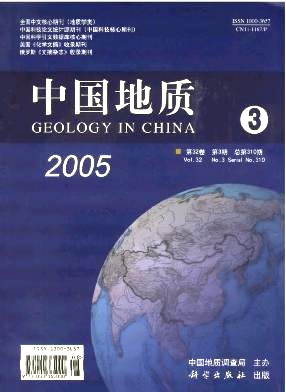WU Guang-ying1,2, PAN Zhong-fang2,LI Jin-dong1,3, XIAO Qing-hui1,CHE Qin-jian1, 3. Geological and geochemical characteristics of the Dayishan granitoids in southern Hunan and their relations to mineralization[J]. Geology in China, 2005, 32(3): 434-442.
| Citation: |
WU Guang-ying1,2, PAN Zhong-fang2,LI Jin-dong1,3, XIAO Qing-hui1,CHE Qin-jian1, 3. Geological and geochemical characteristics of the Dayishan granitoids in southern Hunan and their relations to mineralization[J]. Geology in China, 2005, 32(3): 434-442.
|
Geological and geochemical characteristics of the Dayishan granitoids in southern Hunan and their relations to mineralization
-
1. China University of Geosciences, Beijing 100083, China;2. Yichang Institute of Geology and Mineral Resources, Yichang 443003, Hubei, China;3. Hunan Bureau of Geology and Mineral Resources Exploration and development, Changsha 410011, Hunan, China
-
Abstract
Abstract: Hierarchical units of the Dayishan granite are determined through geological and geochemical survey and study of the rock body. The authors think that the Dayishan granite is a composite intrusion formed by three phases and multiple stages of Indosinian and Yanshanian magmatic activities. Mineralization is mainly related to Mid-Late Jurassic granitic magmatism. The authors give the following points of understanding of tin-polymetallic ore-bearing granite: (1) Granitic magma in the same super-unit evolved from acid to acid-alkaline (calcium-poor and alkali-rich) composition from early to late times, i.e. the later-stage acid-alkaline intrusions show more marked metallogenic specialization. (2) Plagioclase commonly has An=4 to 15, with albite predominating; biotite has Mf1.10, alkalinity AR>2.5 and differentiation index DI>50; the ratio of the number of oxygen atoms to the total number of molecules is >1.98 and is rich in F and B; LREE is enriched relative to HREE and the value of Eu depletion is <0.30. (3) The rock shows higher Sn, W, F, As, Sb, Pb, Zn, Cu and U anomalies and the placer minerals are cassiterite, wolframite, antimony minerals and cinnabar, as well as lead, zinc and copper minerals. (4) The Indosinian-Yanshanian NW-trending Chenzhou-Shaoyang fault is of sinistral compresso-shear origin in the early stage and shows tenso-shear, compounding and multiple transition features; the syntectonic granitic magma was emplaced sequentially in three phases obliquely along the NW-trending tectonic belt from southeast to northwest. Tin-polymetallic deposits (occurrences) are distributed around the intrusion. The deposit types mainly include the altered granite type, greisen dike type and fractured type. The metallogenic conditions and ore indications are also summarized and analyzed.
-

-
-
Access History







 DownLoad:
DownLoad: